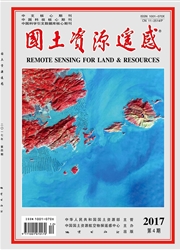

 中文摘要:
中文摘要:
遥感技术是监测区域农业旱情时空变化的主要手段,其反演的植被指数(NDVI)和地表温度(Ts)两个参数可以通过表征绿色植被对干旱胁迫生境的反应揭示土壤水分信息,反映作物受早状况,但两者单独使用时均存在局限性。而基于植被指数和地表温度的二维特征空间综合了两个参数特有的生理生态意义,不仅可以指示作物受旱时的水热胁迫环境,同时揭示了作物在这种胁迫环境下表现出的症状,可有效提高农业干旱监测的精度和效率。本文在较为详细地阐述植被指数一地表温度特征空间评估农业旱情的原理基础上,综述了这方面有代表性的4个干旱监测模型,初步分析了影响这类模型特征空间的部分非土壤水分因子,并对它们在应用中的优缺点做了评述和总结,为今后此领域研究中需要关注的问题做了展望。
 英文摘要:
英文摘要:
Remote sensing technology is the major method for monitoring temporal and spatial changes of regional agricultural drought, from which both the vegetation index (NDVI) and the surface temperature (Ts)derived can reveal information of soil water content and drought - suffering status of crops via indicating the response of green vegetation to drought intimidation habitat. Nevertheless, there still exist some limitations when only one of the two parameters is used. The two -dimensional feature space based on NDVI and Ts integrates the physiological and ecological connotations of both parameters, and hence can not only indicate the water - heat threat environment when drought occurs but also display the symptom of crops, thus effectively improving the precision and efficiency of agricultural drought monitoring. Based on a detailed description of the principle of applying NDVI - Ts space to the evaluation of agricultural drought, this paper deals with four representative models for drought monitoring, prelimina- rily analyzes some non - soil - moisture factors affecting the space, and sums up their advantages and disadvantages in application. Some problems worthy of further attention in this field are also discussed.
 同期刊论文项目
同期刊论文项目
 同项目期刊论文
同项目期刊论文
 期刊信息
期刊信息
